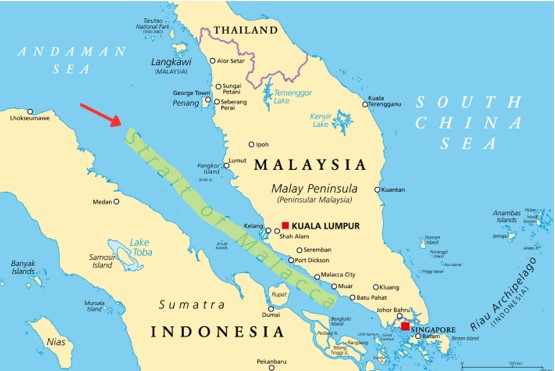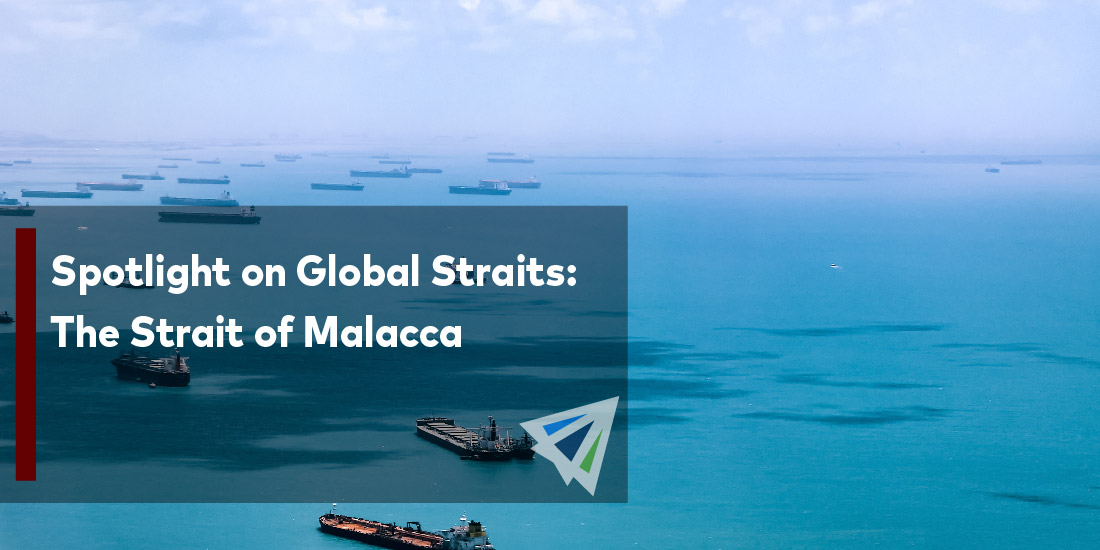The Strait of Malacca is a crucial waterway linking the Andaman Sea and the South China Sea. Spanning 500 miles, it has a funnel shape, narrowing to just 40 miles in the south and expanding to about 155 miles further north, as noted by Britannica. This strait provides an optimal route for large oil tankers traveling between the Middle East’s oil fields and ports in Japan and other East Asian locations.
The volume of trade that passes through this strait is a whopping $3.5 trillion in global trade flows. According to the Institute for Supply Management (ISM), this includes two-thirds of China’s maritime trade, 40 percent of Japan’s, and one-third of all global trade. These figures, highlight its critical importance; for example, per ISM, around 80 percent of China’s oil imports transit this strait, accounting for significant amount of its total oil supply.
These statistics highlight more than just logistics; they reveal the interconnected nature of global commerce. A disruption in the Strait of Malacca wouldn’t just impact Asia; it would send ripples through global supply chains, demonstrating the domino effect present in interconnected trade networks. It’s essential to examine how straits influence global trade dynamics and identify areas that may benefit from increased attention.
Key Takeaways:
- Understand the role the Strait of Malacca plays in the global supply chain.
- What industries would see more impacts than others if disruptions on the waterway occurred.

Strait of Malacca Role in the Global Supply Chain
Events in one part of the world can lead to far-reaching consequences thousands of miles away. This blog highlights the significance of the Strait of Malacca for global commerce, impacting not only Asia but also the West. Given the high volume of trade that flows through this vital waterway, any disruption could trigger a chain reaction affecting various industries in Europe and North America.
The Strait of Malacca is critical for multiple industries, with disruptions potentially impacting Western markets significantly. In the automotive sector – if disruptions occur in China, which is heavily reliant on the Strait of Malacca for trade, it could impede the production of vital components, affecting vehicle assembly and sales in Western markets. The electronics and technology industries also rely heavily on East Asian manufacturing; a disruption could lead to shortages of smartphones and laptops. Retailers depend on this region for fabrics and accessories, risking delays in seasonal/holiday launches and inventory shortages during peak times. Additionally, many pharmaceuticals rely on active ingredients sourced from Asia, and any disruption could delay medication production, while specialty food items could become less available, affecting consumer choices.
Service Perspective
For businesses and policymakers in the West, understanding these dynamics is essential. Additionally, given these potential ripple effects, maintaining the free flow of goods through critical chokepoints like the Strait of Malacca is essential not only for neighboring countries but for the global community as a whole.
While recognizing potential vulnerabilities is important, it is equally vital to view them as opportunities to reassess and diversify your supply chains, look into new partnerships, find different routes to mitigate risks. As well as technological advancements that include but not limited to enhanced cargo tracking and predictive analytics. All of which can help industries, shippers, and those alike to be better prepared for and respond to disruptions.
Prioritize resilience: diversify your supply chains today. Let’s have a conversation.
Interlog continues to stay up to date on this and the latest in the market, to provide our customers and readers with the latest industry news. Should you have any questions regarding this, please send an email to our team today: support@interlogusa.com
Additionally, we have our weekly market updates that can provide you with relevant freight news, updates, developments across the industry, and more.
